Just like any valuable investment, your skin deserves regular care to stay beautiful and natural for years to come. That’s where we come in. Brooke McGuckin is our Aesthetic Nurse with a lifelong passion for skin health and aesthetics. She has spent over six years in the field of dermatology, where her love for skin health and patient care truly flourished.
With a unique blend of clinical experience and artistic eye, Brooke specializes in both aesthetic treatments and surgical nursing.
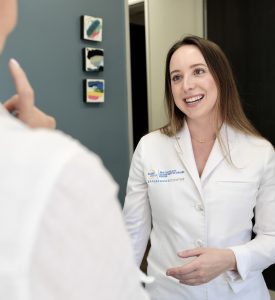
What sets Brooke apart is her passion for being a part of her patients’ full skin journey. From the very first consultation to surgery and follow-up appointments, Brooke is there every step of the way. She finds immense fulfillment in managing patient care and helping them maintain healthy, radiant skin.
“My goal is to enhance each patient’s appearance and confidence. I want to help them feel empowered and happy in the skin they’re in, and to know how to maintain their results.”
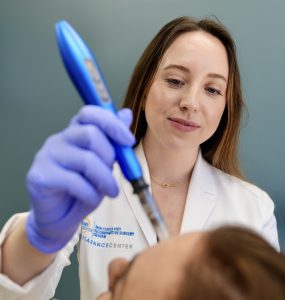
BROOKE SPECIALIZES IN
- Injectables (Botox & Filler, Facial Balancing)
- CO2 Laser Resurfacing
- Microneedling
- Vbeam Laser Treatment
- Chemical Peels – VI Peel & TCA Peel
- Hydrafacial
- Skincare / Product Recommendations
All of these procedures are performed in the office, with minimal or no pain, and a quick recovery.
As we age, our temple areas lose fat, leading to a “hollow” look with a decrease in natural volume. Injectables such as hyaluronic acid dermal fillers or Sculptra can help fill in these areas and restore volume to the temple and brow area.
Injectables in the temple provide immediate results with little to no recovery time. It is a relatively quick, in-office treatment and does not require anesthesia. A topical or injectable anesthetic may be used to reduce pain from the injection.
Injectables are temporary but typically last 1-2 years in the temples before needing to be redone. These procedures are largely considered safe when administered by a skilled injector.
Dermal fillers we offer include Voluma, Restylane Contour, and Restylane Lyft. We also offer Sculptra, which is a biostimulatory injectable that stimulates collagen production. Each product has its own benefits. Consulting with a provider allows us to select the best product based on your goals and anatomy.
Fine lines, wrinkles, loose skin, and other signs of aging are perfectly natural, and many of us reach a point where we want to “do something.” But what does that mean? After looking into the options, you may be asking, “should I choose fillers or surgery?’
We turn to two of our top physicians with this question.
Simon Madorsky, MD is a Facial Plastic Surgeon.
“Judicious use of filler can really enhance natural features,” assures Dr. Madorsky, “but over time, there can be limited results, as well as a necessity for repeated procedures. They have their place, but cannot replace surgery. They will not remove extra skin or extra fatty tissue.”
“Fillers can be overdone. We are seeing something I call Filler Fatigue. People are getting over-filled and often look unnatural.”
The ideal candidate for facial fillers is someone who has minor to moderate signs of aging on their face. These candidates are usually between 30 and 55, since older people may have significantly loosened skin and the presence of other things like bags under their eyes and jowls, which will not respond well to filler injections.
The ideal candidate for surgery, such as a blepharoplasty or facelift, is someone who has more advanced signs of aging in the face and neck. A surgical procedure can address many more issues than facial filler can. That said, candidates still need to be in good enough overall health to undergo surgery and will need adequate support and downtime to recover from the procedure.
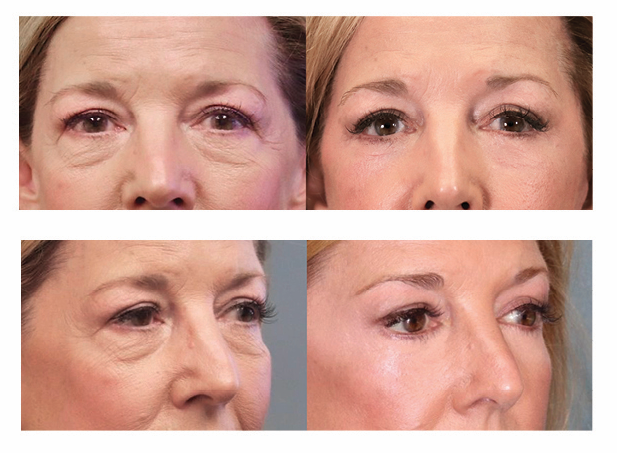
This patient underwent blepharoblasty (evelid surgery). She was advised her that iniectables would have a limited and temporary impact.
Choosing Both Options
Some patients use fillers as a way to “try on” a new face and to helo them decide whether they want to move forward with surgical procedures.
One example of this is the “liquid rhinoplasty,” where the shape of the nose is changed with filler, albeit temporarily. There are also subtle enhancements to the eye area and jawline that can be made with filler and Botox, but don’t have the longevity of a surgical procedure. This is an option worth considering when you talk with your provider.

Dermal fillers, also called injectables, are a safe and effective way to enhance your appearance without the need for invasive surgery or downtime, but results are very dependent on the injector. At the Appearance Center, our providers are highly-trained medical professionals, familiar with the unique anatomy of the face, and have had extensive training and years of experience.
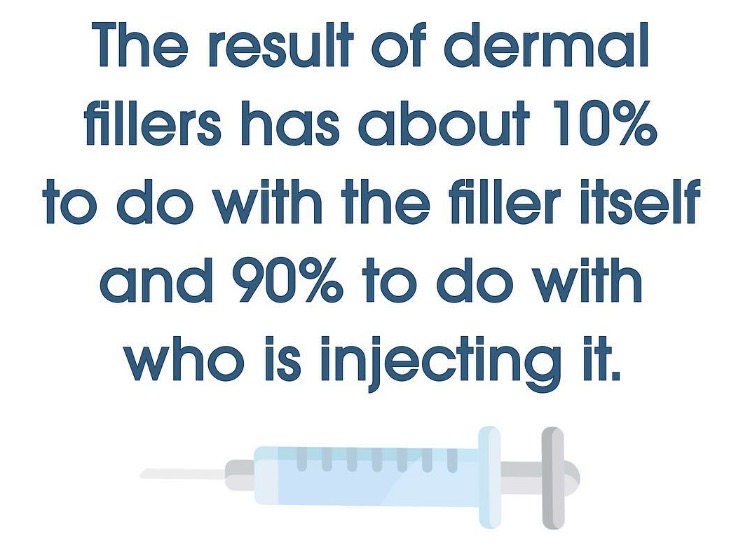
Dermal fillers can be used to address a variety of different cosmetic concerns – restoring lost volume to depleted areas, creating more attractive facial contours, and improving symmetry.
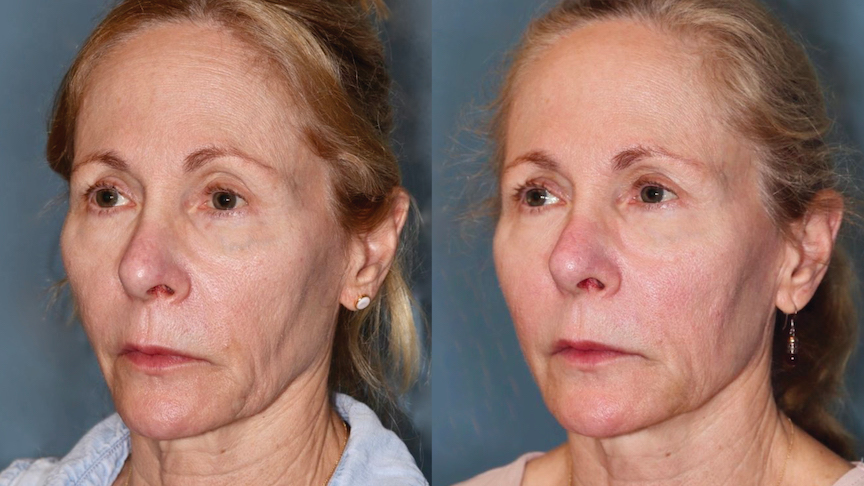
FIGHT THE SIGNS OF AGING
As the skin is subjected to elements over time, the appearance of a face changes. Dermal fillers reverse this by giving a person back the facial volume they may have lost. These fillers can also make the cheeks look more contoured, give a more defined jawline, and overall make a patient look refreshed.
One of the great things about dermal fillers is that virtually no recovery time is required. After their treatment session, patients can usually return to most activities right away.
More good news: The results of dermal fillers are not permanent. If you don’t love your results from dermal filler injections, take heart knowing the effects are temporary.
Filler technology enables results to last six to 18 months although there is variation between individuals, as well as according to the type, quantity and depth of the dermal filler placed within your skin.
In many cases, a skilled cosmetic eye can make more immediate corrections or improve upon your previous results. Our providers are also experienced with correcting over-filling or wrong-site filling done at other locations.
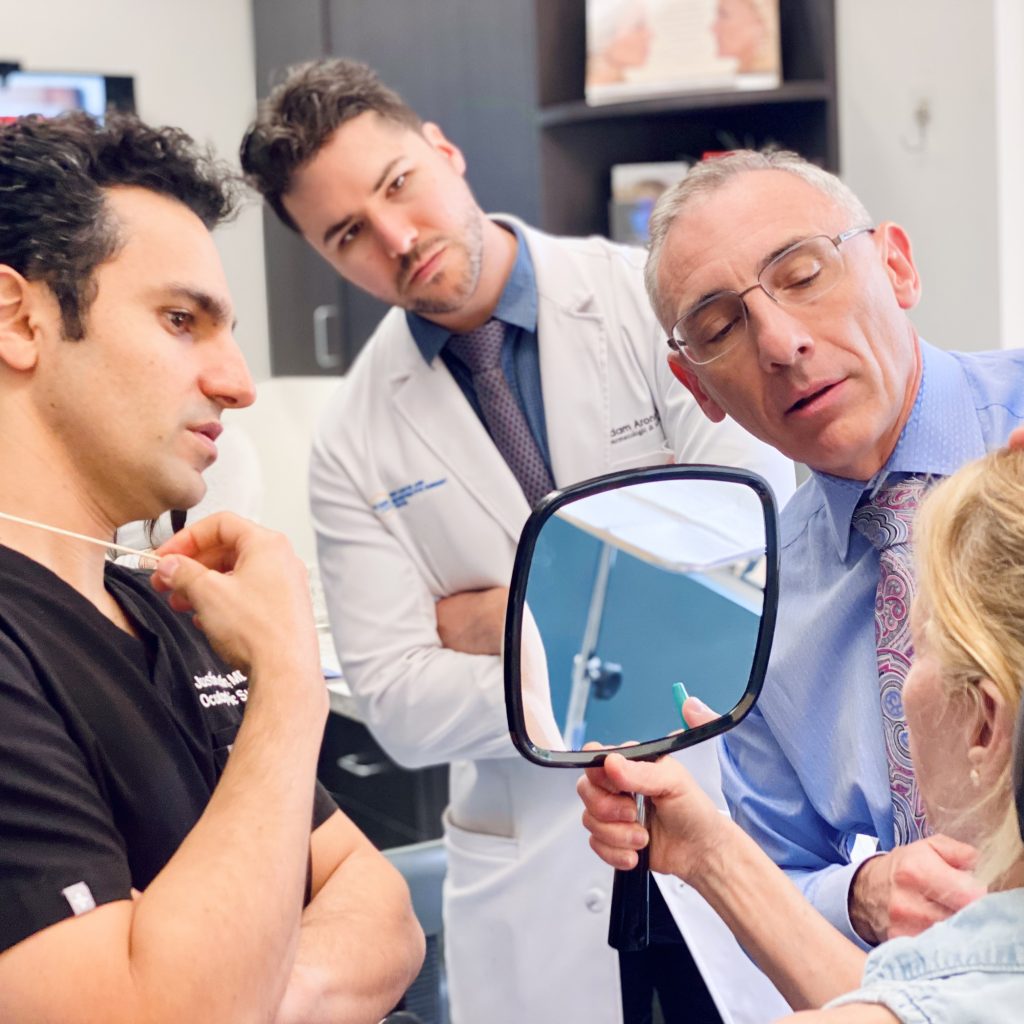
“I just want to look “x” years younger” is a common request in the dermatology or plastic surgery office. One way to accomplish that is to restore facial volume. Most of us may not initially recognize volume loss in our face because we see ourselves everyday. But the changes become stark when we look at old photographs. Restoring volume is an important and common approach to helping patients achieve the results they desire.
Hyaluronic acid injections, commonly known as “fillers,” are a popular way to increase facial volume. Injectable filler is relatively quick to perform, has minimal downtime, and provides immediate results. The main downside of filler is that the results are temporary, typically lasting between 6 and 18 months.
A more permanent way to increase volume is fat transfer. Fat is usually collected from the abdomen and strategically injected into areas of the face. It requires from 1 to 3 separate injections spaced 6 weeks apart to achieve results. Fat integrates well and the results last, which probably sounds great. But is there a catch?
Potentially. An important consideration of fat grafting is that the fat acts like the donor site (abdomen), not the recipient site (face). While people lose weight and volume in their face as they age, they often gain weight in other areas, including the abdomen. As a result, if the patient gains weight over time, the fat in the face will grow too. A well qualified doctor or PA will be able to make the appropriate judgment regarding the volume of fat appropriate to inject.
Because of fat’s potential to grow, the best candidates for fat transfer tend to be older patients, of stable weight, and if applicable, post-menopausal. Otherwise, filler is a great option to add volume and can be tailored as the patient ages.
When it comes to hyaluronic acid injectables (more commonly known as fillers), we tend to focus on areas of volume loss such as the cheeks, under eyes, and lips. The chin is often ignored but can be a great candidate for filler augmentation.
There are several benefits of chin filler including:
- Correction of under-projected chin
- Creating a stronger jawline in men
- Disguising the jowls
- Smoothing of chin dimpling
Chin filler is great for men and women and can be injected into different areas to maintain and/or enhance masculinity and femininity in patients.
The amount of filler needed depends on the chin projection deficit as well as the goal of treatment but can typically range from one to three syringes. Results can last up to two years depending on the type of filler needed.
In the particular patient above, two syringes of Restylane Defyne were used to achieve these beautiful results.
Talk with your provider today to see if chin filler is the right choice for you.
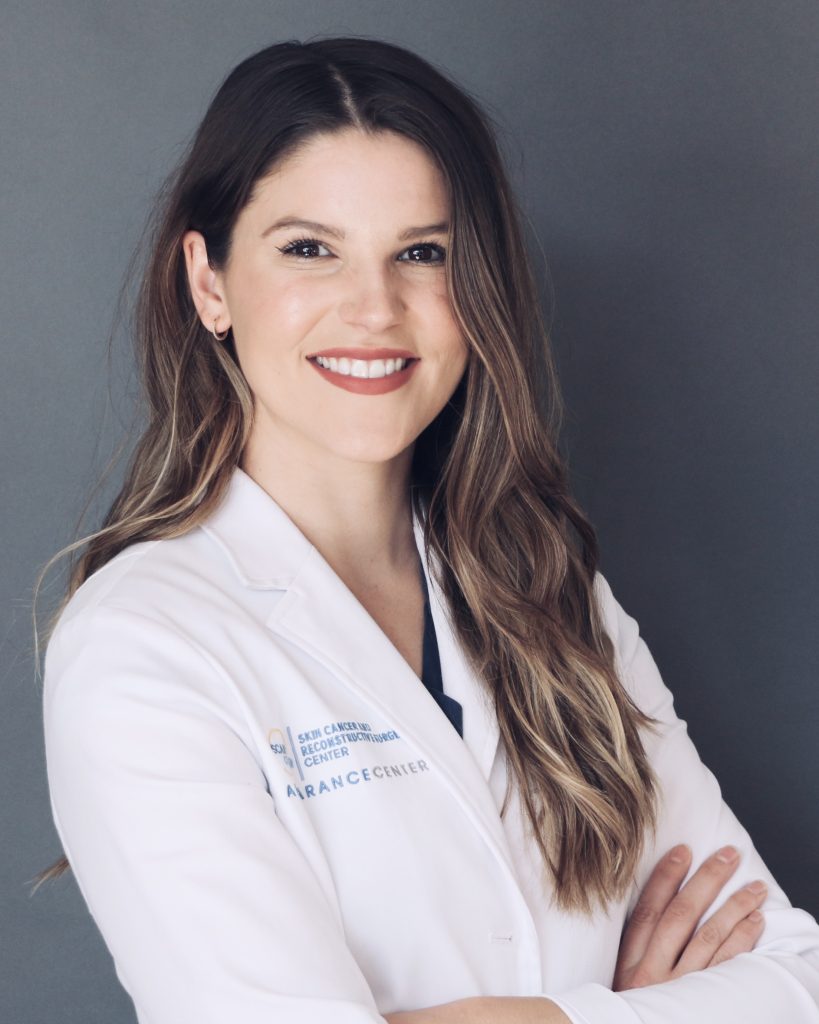
The young woman seen in photos came to our Physician Assistant Shea for a non-surgical chin augmentation. Shea injected her with Restylane Defyne, which is FDA-approved for chin augmentation and correction. This subtle enhancement has huge impact, bringing her face into balance.
“Restylane Defyne is a great alternative for those who prefer nonsurgical treatment options for chin enhancement, or who want to get a glimpse into what a chin augmentation would look like,” says Shea.
